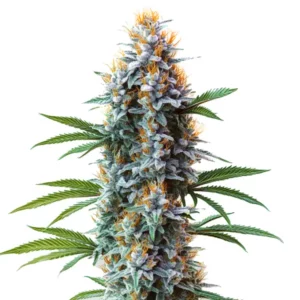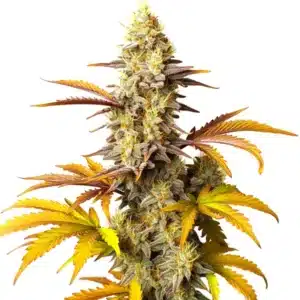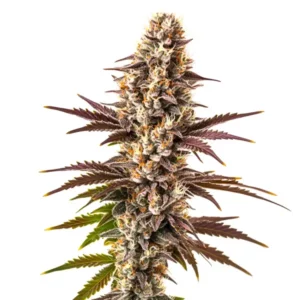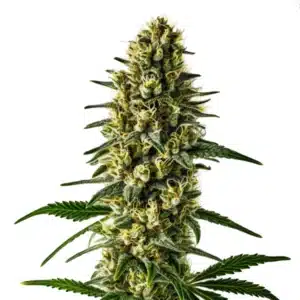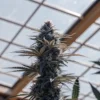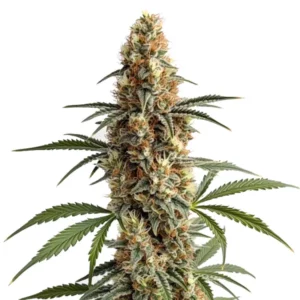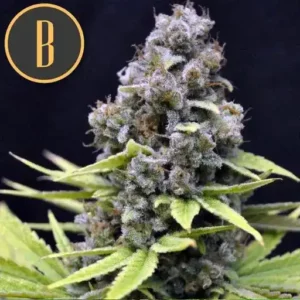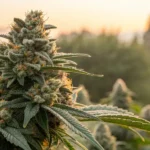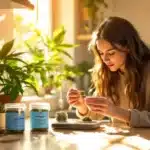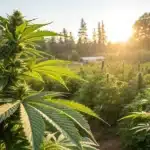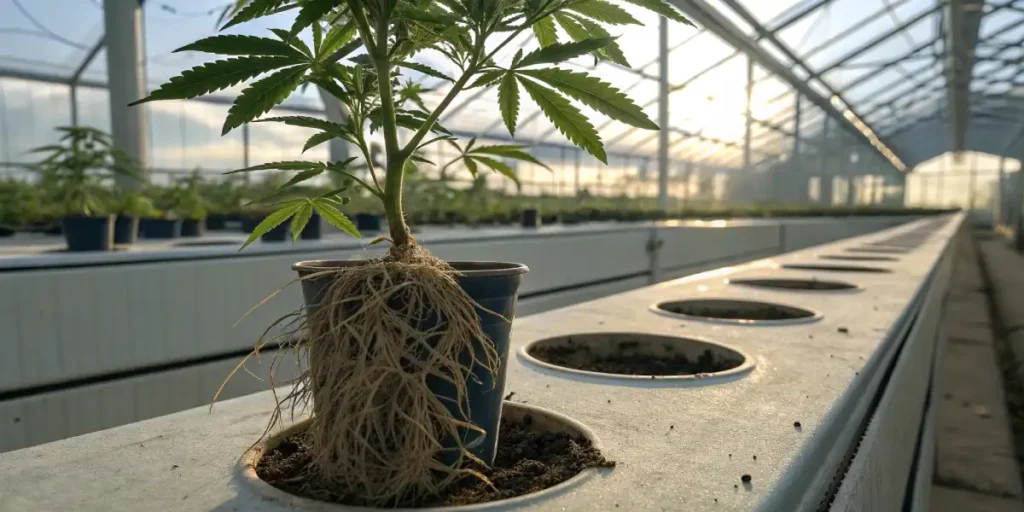
Root Bound Cannabis Symptoms
Growing cannabis can be an exciting journey, but it comes with challenges. Root bound cannabis symptoms are one of those hurdles. When your plant outgrows its pot, its roots can become tangled and restricted, leading to a host of issues.
A fundamental principle of plant growth is that a plant can grow upwards only as much as its roots can grow downwards. If the roots cannot grow deeper, they are forced to circle, leading to the tangled, compacted mass that chokes the plant. The roots have nowhere to go,
Recommended Strains
Blue Cheese
|
|
THC | 16% - 20% (Medium) |
|
|
Type | Feminized |
|
|
Yield | High |
|
|
Phenotype | 80% Indica / 20% Sativa |
Blue Cheese Autoflower
|
|
THC | 14% - 16% (Medium) |
|
|
Type | Autoflowering |
|
|
Yield | Medium |
|
|
Phenotype | 80% Indica / 20% Sativa |
Identifying Root Bound Cannabis Symptoms
The signs of root bound cannabis can be subtle at first. One of the initial symptoms is leaf discoloration, often turning yellow or brown, which signals nutrient deficiencies because the tangled roots struggle to absorb them.
You might also see stunted growth, where your plant looks smaller than it should. This is a tell-tale sign. Additionally, symptoms include wilting and drooping despite regular watering, because the compact root system can no longer absorb water effectively.
Diagnosing Root Bound Cannabis Issues
Diagnosing the issue involves checking more than just the surface. Carefully remove the plant from its pot. A healthy root system spreads out evenly, while root bound systems appear as a dense, circular mass. Another method is to observe water drainage; if water pools on top and drains slowly, it could mean the roots are too compacted.
Promos & Deals
Preventing Root Bound Issues
Preventing root bound issues starts with choosing the right pot size. A pot that’s too small will quickly limit root growth.
You will notice that at the beginning of the grow, the soil is loose, but with repeated watering, it begins to compact and settle. It is a good practice to fill the empty space that this creates at the top of the pot with new soil. This helps prevent the upper roots from becoming exposed and circling.
Applying a layer of mulch to the topsoil is another excellent way to protect the main root system. It is better to have it than not, as it helps regulate moisture and temperature in the root zone.
It’s also important to manage the temperature of the pot itself. Whether from indoor lights or direct outdoor sun, pots can get excessively hot, causing the roots to recoil from the edges and twist inwards. This is especially true for black plastic pots. Providing some shade for the pots can help avoid this problem and protect the roots from heat stress.
Ensuring adequate drainage and using air pots or fabric pots, which air-prune the roots, are also effective preventative measures.
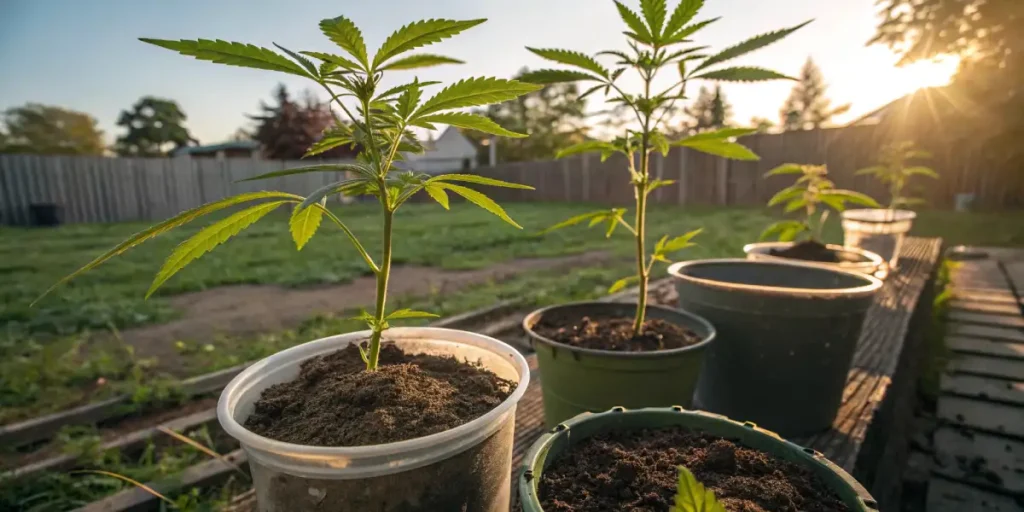
Effective Transplanting Techniques
Transplanting is a vital step to save a root bound plant. Before you start, prepare a new, larger pot with fresh, nutrient-rich soil. Gently remove the plant from its current pot and carefully tease the compacted roots apart to encourage new growth. To mitigate transplant shock, keep the plant in a stable environment with consistent temperatures and humidity to help it acclimate.
Choosing the Right Strains
Some cannabis strains like Blue Dream, Girl Scout Cookies, and Critical Mass Auto are more adaptable and resilient, making them less likely to suffer severely from being root bound. Choosing strains bred for resilience can significantly reduce the likelihood of issues.
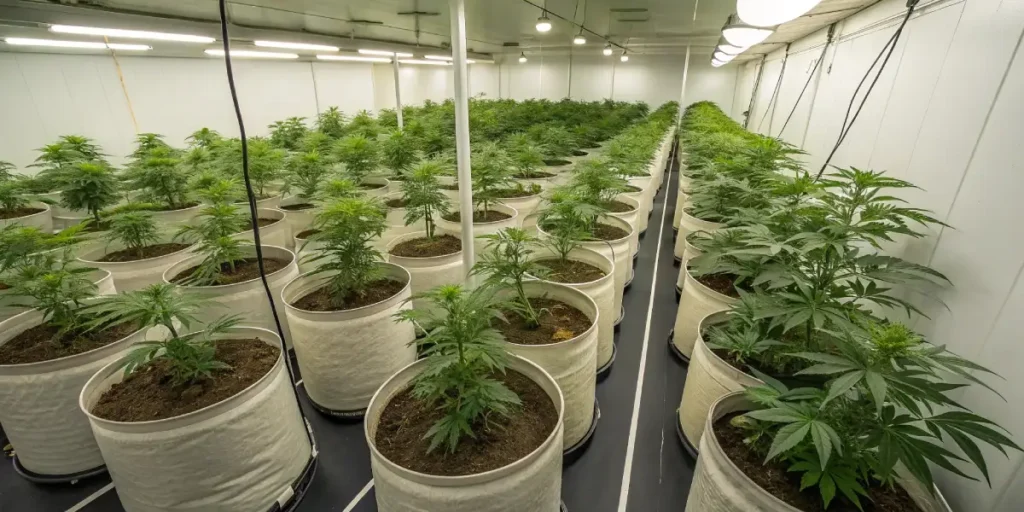
FAQs
What are the common root bound cannabis symptoms?
Common symptoms include yellowing or brown leaves (leaf discoloration), stunted growth, and wilting even when the soil is moist. You may also see roots growing out of the drainage holes.
How can I diagnose root bound cannabis issues?
Observe the plant for the symptoms above. For a definitive diagnosis, carefully remove the plant from its pot to visually inspect the root ball. A dense, tightly wound, circular mass of roots confirms the plant is root bound.
How do I prevent root bound cannabis symptoms?
Prevention involves using the right pot size and transplanting into larger containers as the plant grows. Using pots that encourage air-pruning (like fabric pots) is also very effective.
What is transplant shock in cannabis plants?
Transplant shock is the stress a plant experiences when moved to a new pot. It can cause temporary wilting or slowed growth. Minimize it by handling the roots gently and providing a stable environment after transplanting.
Which cannabis strains are less likely to become root bound?
While any plant can become root bound in a small enough pot, resilient and adaptable strains like Blue Dream, Girl Scout Cookies, and Critical Mass Auto are often more forgiving of less-than-ideal container conditions.


